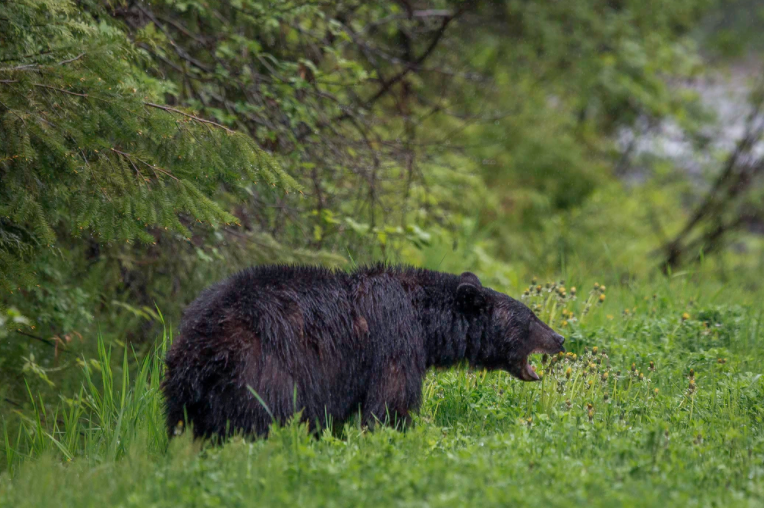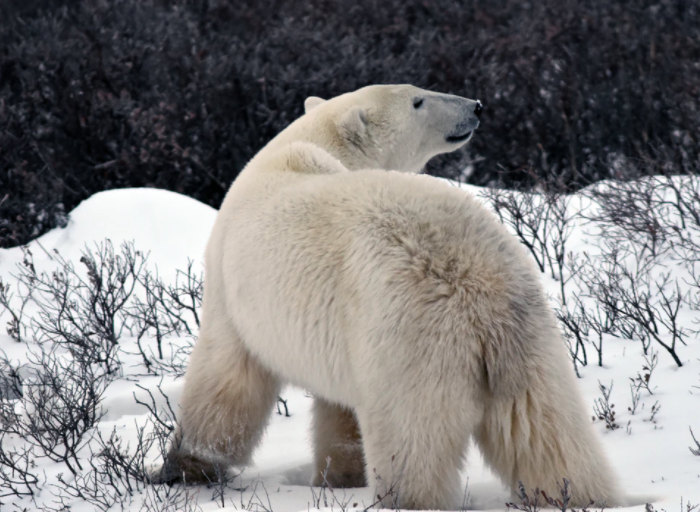The Six-Clawed Bear
"I've yet to meet a someone who locked eyes with the creature and lived to describe what they saw. I do not envy whoever first came close enough to see that this bear has six toes on each foot, instead of five."The Six-Clawed Bear lives between the edge of Kelunbar Forest and the Bodurn Mountains. It is a fearsome creature, easily angered, and dangerous to cross paths with unless you are a plant.-Yet Funto Tereso, skee librarian
Six Claws
As its name suggests, the six-clawed bear has six toes on each foot, each with massive claws used to for gripping prey of any size. Skee scholars have theorized that, additionally, its large mouth may have double rows of teeth, though no one close enough to see them has survived to share their findings.Obligate Carnivore
Unlike other bears of Kelunbar, the six-clawed bear eats only meat. As far as what kind of meat, these creatures are indiscriminate, eating anything from chipmunk to snake to dear to even the fearsome white wolverine. It is not unusual for this creature to scavenge by scaring away other hunters from their prey before they finish their meal. In addition, it is surprisingly capable of hunting via ambush, and its large size allows it to sprint in short bursts to overtake animals like deer or elk.Appearance
The six-clawed bear has mottled brown to black fur with a thick, double coat to protect it from the harsher weather at the base of the Bodurn Mountains. This creature is also the largest predator in Kelunbar, towering at five feet at the shoulder on all fours, and up to thirteen feet standing upright. They use this height to find and track prey, as well as reach prey on low branches.Life Cycle
In general, the six-clawed bear travels alone, only mating in the spring. Female bears generally only have one offspring every three to six years, given that hunting for two can be difficult. This is a relief to most people in Kelunbar, as the existence of more of these powerful hunters could probably wipe out a species. Cubs stay with their mother for the first two years of their life, learning to hunt. Eventually, the mother bear makes it clear that it is time to move on by a show of force, attacking the cub and forcing them to run. Many of these bears have teeth or claw scarring from this event. Occasionally the mother accidentally kills the younger bear. Female six-clawed bears reach sexual maturity around six years, and males around four.Hibernation
Unlike other bears, the six-clawed bear does not hibernate in the winter, instead hunting year round. During this time of year they grow in white fur to camouflage it in snow. This is often a vicious time of year, where the bears choose to hunt other predators, rather than searching for smaller hibernating animals.
Bear the Animal by Will Zhang
Lifespan
30 years
Average Height
11 feet on two legs
Average Weight
Female: 4,000lbs
Male: 3500lbs
Geographic Distribution
Threat
Bumers and mysums are not bothered by the six-clawed bear, but the skee on the edge of the forest and the mountains build their villages high in the trees to avoid these creatures. Additionally, one of these bears would certainly eat any wyvern it could get ahold of. The six-clawed bear is also known to fish, and any siren in near proximity would be as likely a candidate as a turtle or trout, with the exception of bumer sirensRemove these ads. Join the Worldbuilders Guild












Comments
Author's Notes
This article was originally created for World Anvil Summer Camp 2020 for the prompt: Write about an apex predator in your world. How does it hunt and survive?